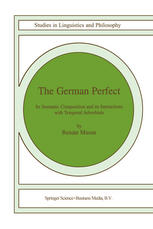

Most ebook files are in PDF format, so you can easily read them using various software such as Foxit Reader or directly on the Google Chrome browser.
Some ebook files are released by publishers in other formats such as .awz, .mobi, .epub, .fb2, etc. You may need to install specific software to read these formats on mobile/PC, such as Calibre.
Please read the tutorial at this link: https://ebookbell.com/faq
We offer FREE conversion to the popular formats you request; however, this may take some time. Therefore, right after payment, please email us, and we will try to provide the service as quickly as possible.
For some exceptional file formats or broken links (if any), please refrain from opening any disputes. Instead, email us first, and we will try to assist within a maximum of 6 hours.
EbookBell Team

5.0
30 reviews1. OUTLINE German has the three main perfect constructions which are illustrated in (1. 1). 1 In each of these constructions, the verb appears in the past participial form and is combined with an auxiliary - in this case, haben ('have'); other verbs form their perfect constructions with the auxiliary sein ('be'). 2 The auxiliary can then be com bined with a tense -Le. the present tense as in (Ua), the past tense as in (b), or the future tense as in (c). 3 (1. 1) a. PRESENT PERFECT: Die Eule hat die Schule verlassen. the owl has the school left b. PAST PERFECT: Die Eule hatte die Schule verlassen. the owl had the school left c. FUTURE PERFECT: Die Eule wird die Schule verlassen haben. the owl will the school left have As will shortly become clear, the present perfect is the most intricate of the perfect constructions in German. It has been investigated intensely in the past, with the result that today there is little doubt about what the core problems concerning its semantics are.